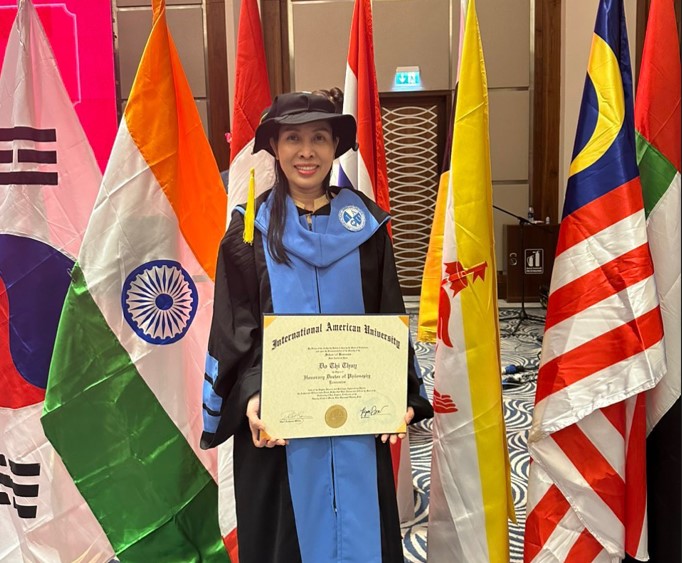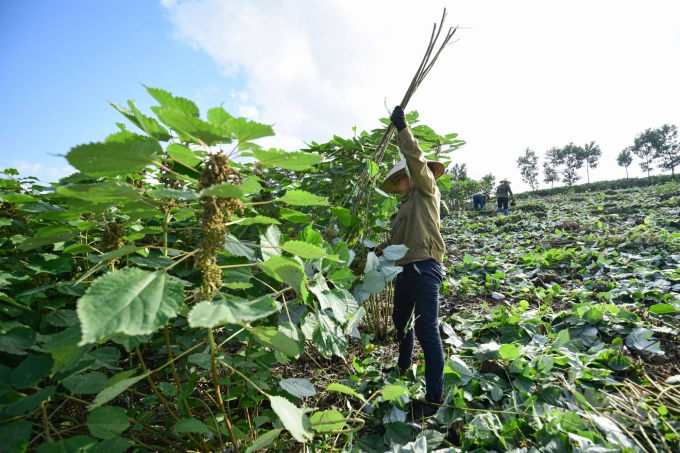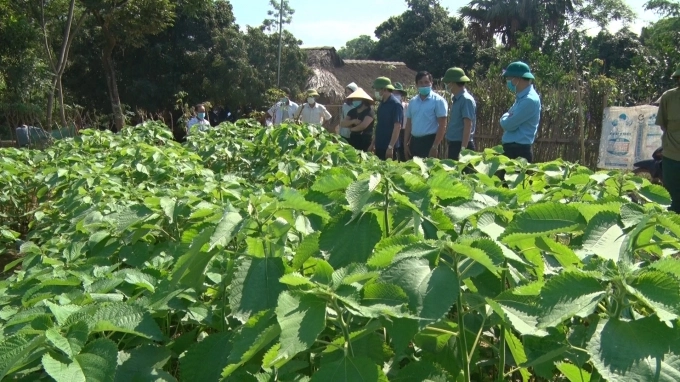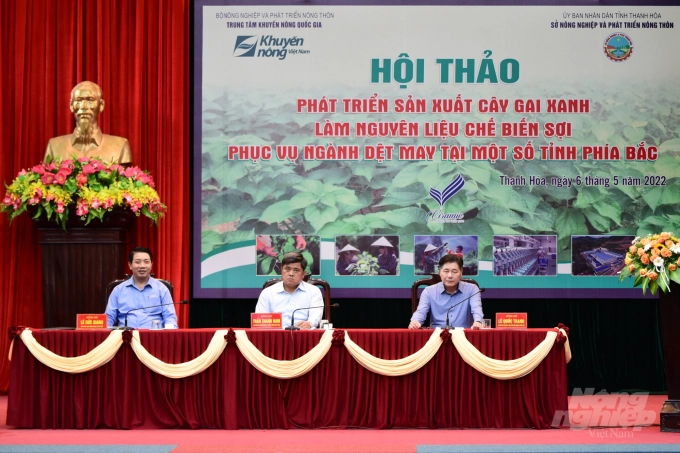(VAN) Ramie has long been used in Thanh Hoa to make the famous specialty ‘ramie cake’, but the trend of growing ramie for fiber has only appeared recently.
Worthy replacement of inefficient crops
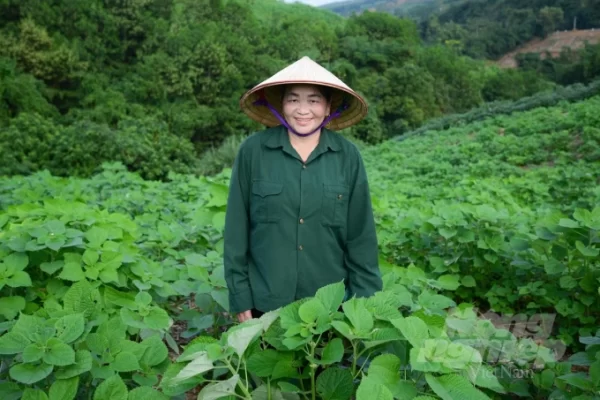
Ramie helps Ms. Pham Thi Thanh’s family attain a great source of income. Photo: Vo Dung.
Many localities in the districts of Cam Thuy, Thach Thanh, Ba Thuoc, Lang Chanh, and Ngoc Lac of Thanh Hoa have now converted a part of inefficient cassava, sugarcane, and acacia growing area to develop ramie raw material. And ramie is initially showing superior economic efficiency compared to other crops.
Ms. Pham Thi Thanh in Cam Hoa village, Cam Tu commune, Cam Thuy district, gathered land and converted 7 ha of inefficient cassava and sugarcane land to grow ramie for fiber in 2019. And after a year she was able to harvest four crops with an average output of 2 tons of fiber/ha. Receiving an offer from An Phuoc Textile Factory of An Phuoc Group – Viramie under a contract to sell the output with a price of VND 45 – 47 million/ton (depending on the type), Ms. Thanh’s family earned over VND 90 million/ha that year.
“The initial investment for 1 ha of raw ramie takes approximately VND 40-45 million. Attentive crop care can help a household makes a profit right in the first year of planting. Ramie has a 10-year root retention period and can be cut off for four times a year, so ramie growers have work to do and money to earn almost all year round.”
“In the past I only planted a small area of ramie to sell to households producing ‘gai cakes’, but now when I switch to planting it for fiber, the initial confusion is obvious. However, the soil here is truly suitable for ramie, and local people have experience with this plant, so we can quickly get access to the planting, caring, and harvesting method in accordance with the requirements of the factory. We only collected about 2 tons of fiber/ha in the first year, but in the following years, my family could collect 3.5 – 4 tons. With the factory’s current purchase price, 1 ha of ramie for fiber can make a profit of nearly VND 180 million per year, much higher than other crops,” said Ms. Thanh.
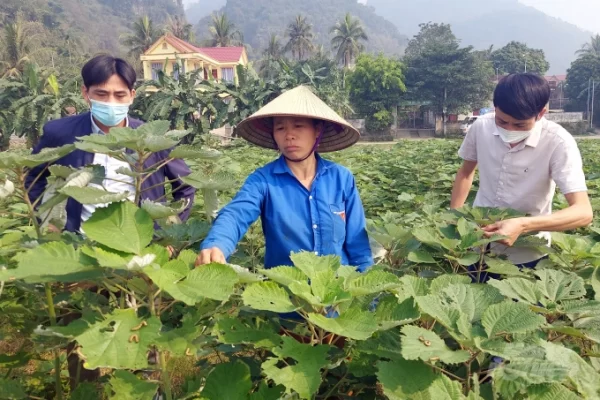
Many households have converted a part of the inefficient crop area to grow ramie. Photo: Vo Dung.
Mr. Nguyen Xuan Phuong, Vice Chairman of Cam Tu Commune People’s Committee, said that the locality had planted 80 ha of ramie at present linked with An Phuoc Textile Factory. According to the plan, Cam Tu would plant another 15 ha in 2022. The region’s land fund still had approximately 30 – 40 ha that could be converted to grow ramie.
One characteristic of ramie is that it can not tolerate waterlogging and is suitable for high mounds, requiring less water for irrigation than some other crops. The mountainous districts have a large area of hilly land, so there is potential to expand the raw ramie material planting area.
‘High profit, high soil recovery rate, so why not!’
According to Mr. Cao Anh Vu, Chairman of Cam Giang Commune People’s Committee, growing ramie for fiber results in benefits in terms of not only economic proficiency but also environment.
Other crops have a short growth cycle, their roots are usually discarded after the annual harvest, increasing soil erosion. Meanwhile ramie roots can sustain for 10 years, so they basically prevent such phenomenon.
In addition, ramie leaves and stems contain a lot of nutrients, which have a great effect on restoring and improving the soil. On normal occasions, after a harvest ramie bark, stem and leaves will be chopped down by farmers and spread evenly over the planting area to make organic fertilizer for the soil. Thanks to its high protein content, the stem and leaves quickly help the soil become loose and rich in nutrients.
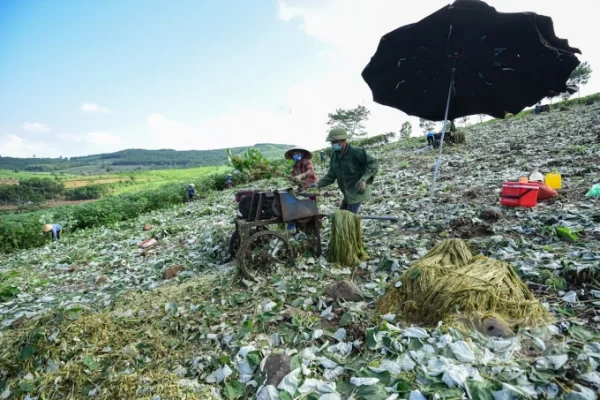
Ramie not only possesses high economic efficiency but also has the effect of improving the soil. Photo: Vo Dung.
“Although developing ramie material area for fiber has high economic efficiency, the plant is picky about the soil. Localities should recommend people not change the plant structure inappropriately because of the great benefit of ramie. Ramie material area can be further developed, but we must take into consideration of its growth characteristics and adaptability to each land area,” said Mr. Cao Anh Vu.
Authors: Vo Dung – Cong Dien
Translated by Samuel Pham


 Tiếng Việt
Tiếng Việt